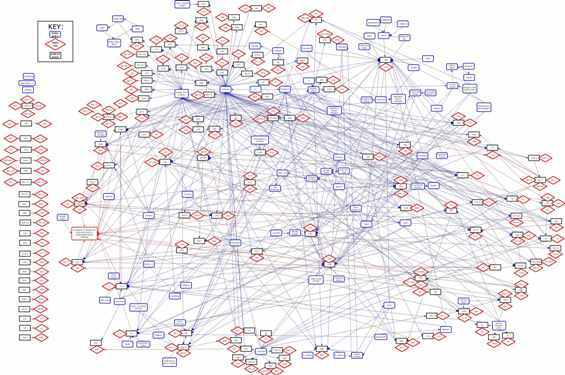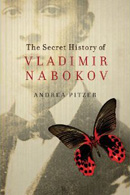Nabokov as digital prophet and Pale Fire as hypertext
Born in the nineteenth century, was literary alchemist Vladimir Nabokov also a digital pioneer for our electronic era?
Nabokov’s description of a primordial emoticon from 1969 (“I often think there should exist a special typographical sign for a smile—some sort of concave mark, a supine round bracket”*) gets new coverage each decade from those chronicling the history of pictographic punctuation.
But some are taking the idea of Nabokov as a pioneer a little more seriously. Simon Rowberry, a research student at Britain’s University of Winchester, is exploring Nabokov’s 1962 novel Pale Fire as a forerunner of hypertext. (Hypertext is a digital story in which parts of the text link explicitly to other sections, allowing readers to navigate within the story to create various versions of the text.)
Pale Fire is presented by demented narrator Charles Kinbote as a 999-line poem which he is annotating in the commentary that forms the bulk of the book. The novel has a storyline that progresses during sections of the foreword and commentary, but the reader is often directed back to lines from the poem or sent to other annotations (“see also note to line 894”). Subtler elements of the story emerge only through cross-references.
In this extraordinary graphic from a poster presentation given two years ago at the ACM Hypertext Conference in the Netherlands, we can see how Rowberry has begun to chart Pale Fire’s internal links and loops. Click the image to see an expanded version—it should then be zoomable for detailed viewing.
The novel’s principal characters—John Shade, Kinbote, and Jakob Gradus—sit in a horizontal row of blue boxes in the top third of the graphic.
The word hypertext dates back to 1963, just a year after Pale Fire’s publication—and the two were linked early on. IT trailblazer Ted Nelson, who coined the term, reportedly got permission to use Pale Fire in a 1969 hypertext demo at a conference hosted by Brown University.
Rowberry is working on his dissertation, “The Literary Web,” which will include a chapter on Pale Fire and hypertext. This week he suggested that examining Pale Fire as hypertext is more than an exercise in revisiting history:
I think the importance of Pale Fire as hypertext is not just because Nabokov created a novel that contained links, but also because he included aspects of creative searching within the text that contemporary writers of digital fiction have only recently begun to re-explore.
In The Secret History I examine some of Pale Fire’s cross-references and suggest that Nabokov not only created a kind of hypertext within Pale Fire, but may also have connected the narrative to history recorded in the archives of The New York Times, a newspaper mentioned repeatedly in the novel.
Yet taking Nabokov seriously as an innovator in the realm of experimental narratives doesn’t mean we should overlook his lesser prophecies for the digital realm. In addition to his 1969 description of the ur-emoticon, there is pitch-perfect Internet-speak in the 1947 novel Bend Sinister, which includes an “Omigod Lane.”** We can only wonder if in some musty archive, a rough draft of LOL-ita sits, waiting to be found.
[See Rowberry’s full poster presentation on charting Pale Fire.]
———
Image courtesy of Simon Rowberry. All rights reserved.
*From Strong Opinions (133-134).
**Though an early user of “Omigod,” Nabokov was not the first author to employ it. A Google n-gram dates that honor to another book from 1925.

